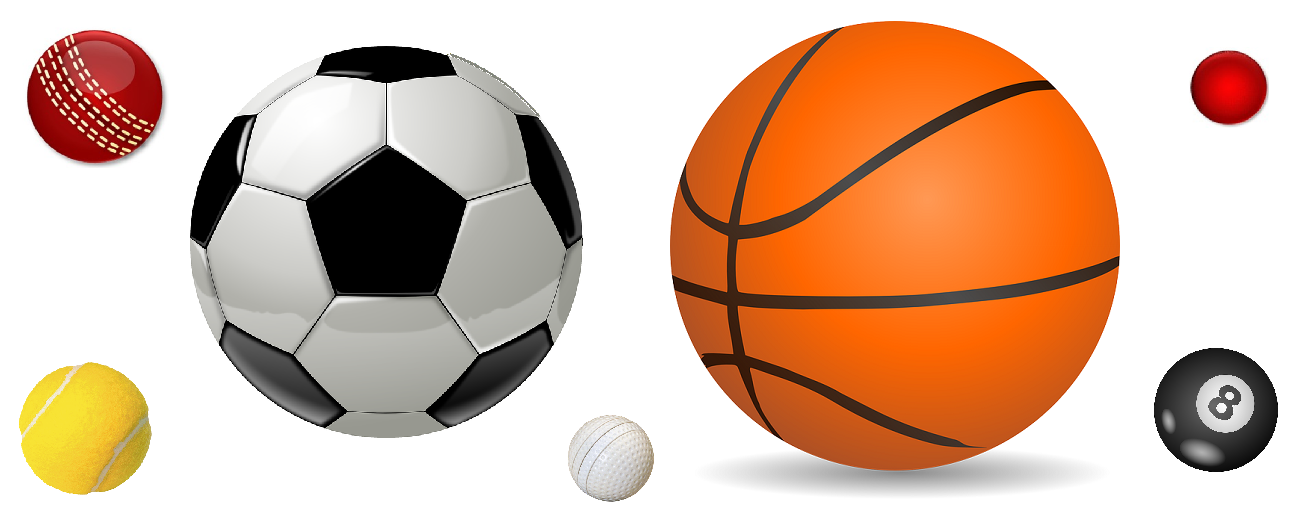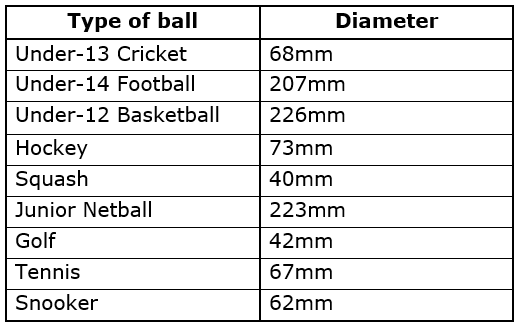Skip over navigation




Or search by topic
Number and algebra
Geometry and measure
Probability and statistics
Working mathematically
Advanced mathematics
For younger learners
Sports Equipment
Age 7 to 11
Challenge Level 





I've collected together these different balls that are used in various sports:

as well as some others!
Here are the standard diameters of the different types of ball:

Here is a scale drawing of the balls:

You might like to find a few different balls at school to get a feel for their different sizes before trying this challenge.
Try using the diameter information to make circles the right size and use them to explore.
If a line is drawn on the ground and the balls are put on that line with each ball touching the one in front and the one behind, which arrangement makes the shortest line of balls?
Which arrangement makes the longest line of balls?
You may also like
Shaping It
These pictures were made by starting with a square, finding the half-way point on each side and joining those points up. You could investigate your own starting shape.

